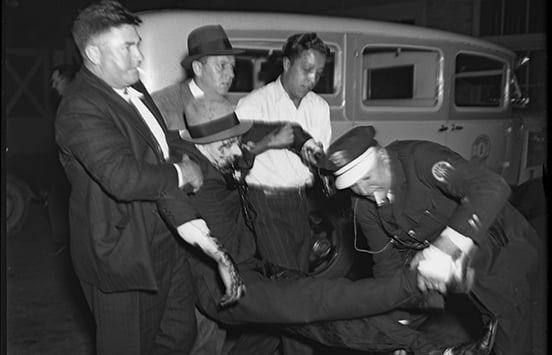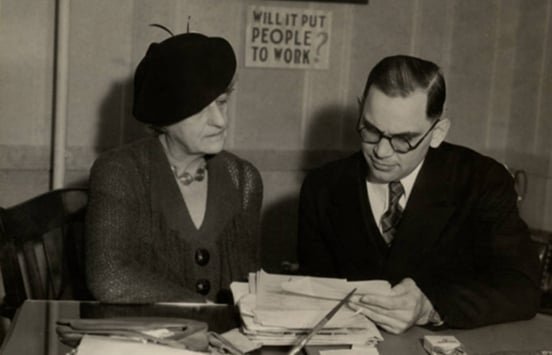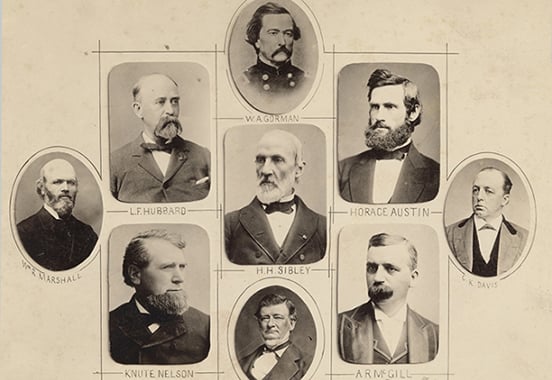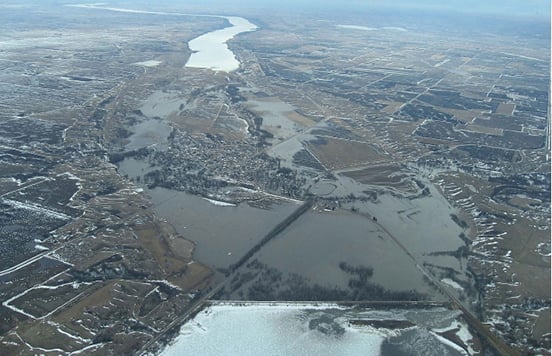Topics
Category
Era
MNopedia
Replacements (band)
Pioneers of alt rock, grunge, and alt country

Frontenac State Park
A dramatic landscape 500 million years in the making

Flour City Ornamental Iron Works Strike, 1935
A conflict between workers and police that led to two deaths

Ulrich, Mabel S. (1876–1945)
From sex education to the Federal Writers' Project

Washburn A Mill
The birthplace of one of the biggest modern food companies in the world

Pardon Power in Nineteenth-Century Minnesota
An era of unprecedented clemency via executive power

Lippincott, Carrie H. (1860–1941)
The self-proclaimed "Pioneer Seedswoman of America"

Draining of Glacial Lake Agassiz
The event that created the Minnesota rivers and lakes we know today

Replacements (band)
Pioneers of alt rock, grunge, and alt country

Frontenac State Park
A dramatic landscape 500 million years in the making

Flour City Ornamental Iron Works Strike, 1935
A conflict between workers and police that led to two deaths

Ulrich, Mabel S. (1876–1945)
From sex education to the Federal Writers' Project

Washburn A Mill
The birthplace of one of the biggest modern food companies in the world

Pardon Power in Nineteenth-Century Minnesota
An era of unprecedented clemency via executive power

Lippincott, Carrie H. (1860–1941)
The self-proclaimed "Pioneer Seedswoman of America"

Draining of Glacial Lake Agassiz
The event that created the Minnesota rivers and lakes we know today

Replacements (band)
Pioneers of alt rock, grunge, and alt country

Recently Added Articles
Spotlight On LGBTQIA+
This Day in Minnesota History (June 12)
Visiting the Twin Cities for the dedication of the new capitol, William Colvill dies in his sleep at the Old Soldiers' Home in Minneapolis the night before the ceremony, at which he was to carry the battle flag of his regiment. Born in New York in 1830, Colonel Colvill had led the First Minnesota's famous charge at Gettysburg (see July 2). After the war, the Red Wing resident served as state attorney general.
Iowa Territory is formed, including in its claim present-day Minnesota west of the Mississippi River, which was called Clayton County. Henry H. Sibley serves as justice of the peace for the county, but this part of Minnesota would be left without a government when Iowa became a state in 1846.
Rocky Mountain locusts cross into Minnesota and begin destroying crops in the southwestern part of the state. Relief efforts are organized to keep the settlers from starving. The locusts return for the next four years, finally leaving in August 1877.
The last commercially cut logs pass through Stillwater's boom on the St. Croix, marking the end of large-scale logging in the St. Croix valley. The boom was a chain of logs stretching across the river. Logs floated from upstream, each carrying their owner's brand, were sorted and measured so that each logging company got credit for what it had cut.
The Minnesota Historical Society accepts a grant from the Weyerhaeuser family to establish the Forest Products History Foundation. Initially located in St. Paul, the foundation evolves into the international organization known as the Forest History Society. Now located in Durham, North Carolina, the society's mission remains the same: to preserve and interpret the documents of forest and conservation history.
A raccoon causes a social media frenzy when it climbs St. Paul's USB skyscraper. Workers rescue the animal the following morning and release it into the wild.
A massive storm, which continues into June 20, drops over seven inches of rain on Duluth and surrounding areas. 3,100 homes and businesses are damaged. Total damage estimates are set at $100 million. Floodwaters overwhelm the Duluth Zoo, killing several animals and leading several others to escape. The Swinging Bridge in Jay Cooke State Park is destroyed.
History Near You
Choose a location on the map to see history near you.
















